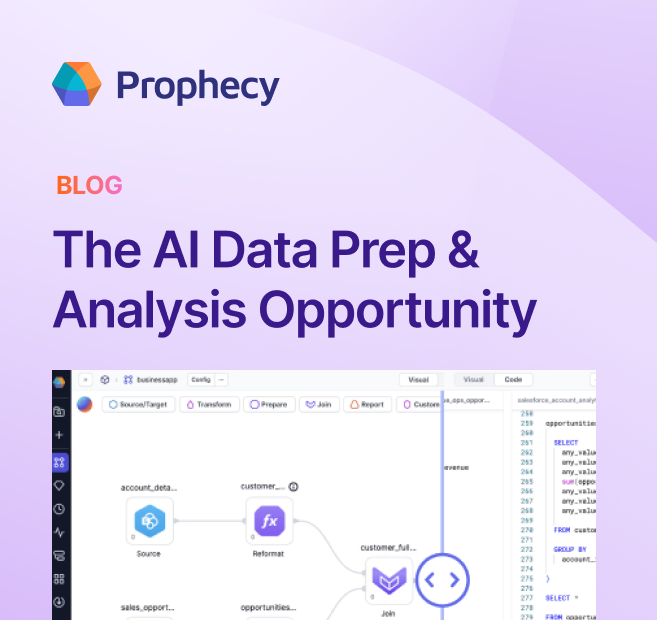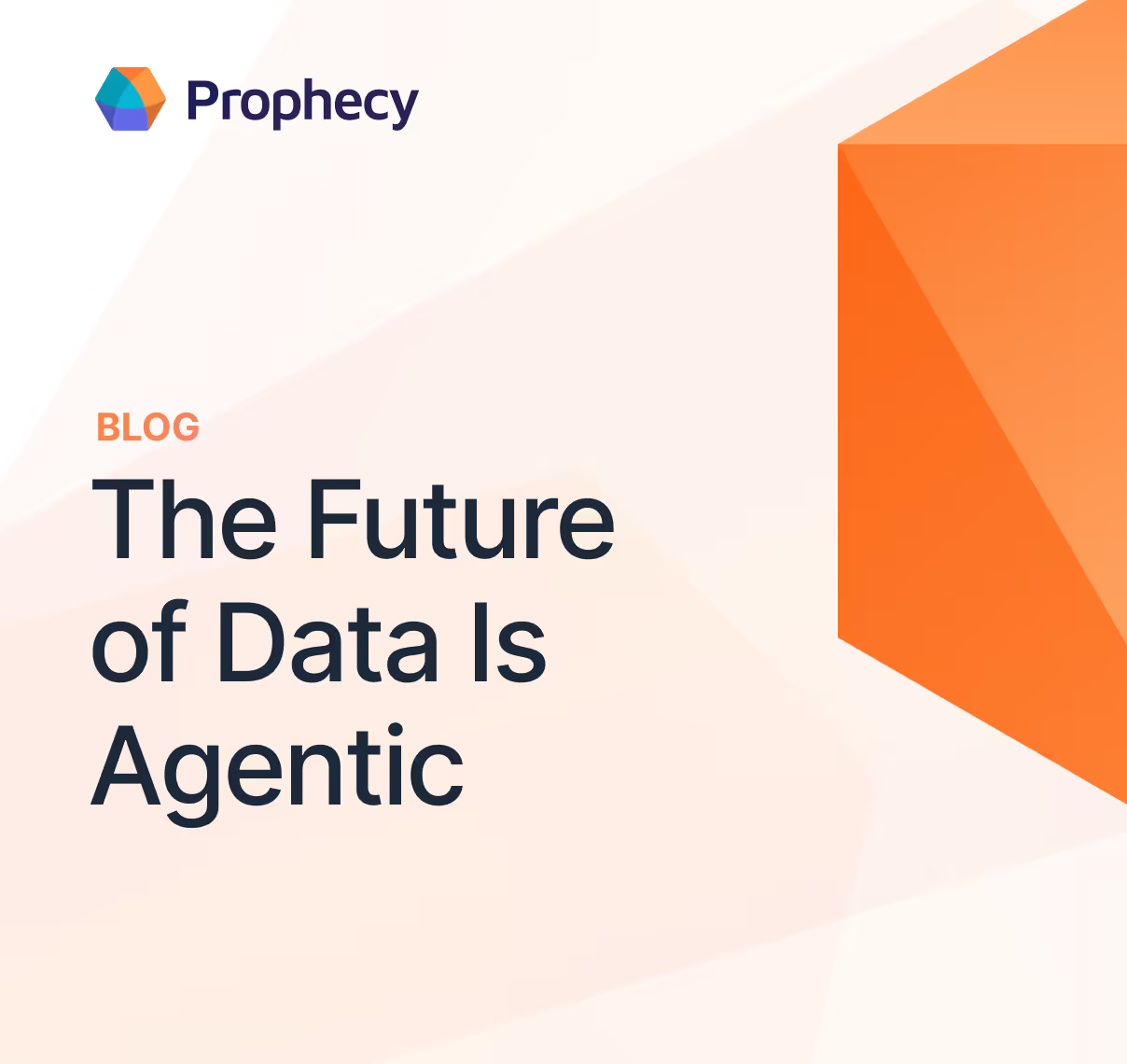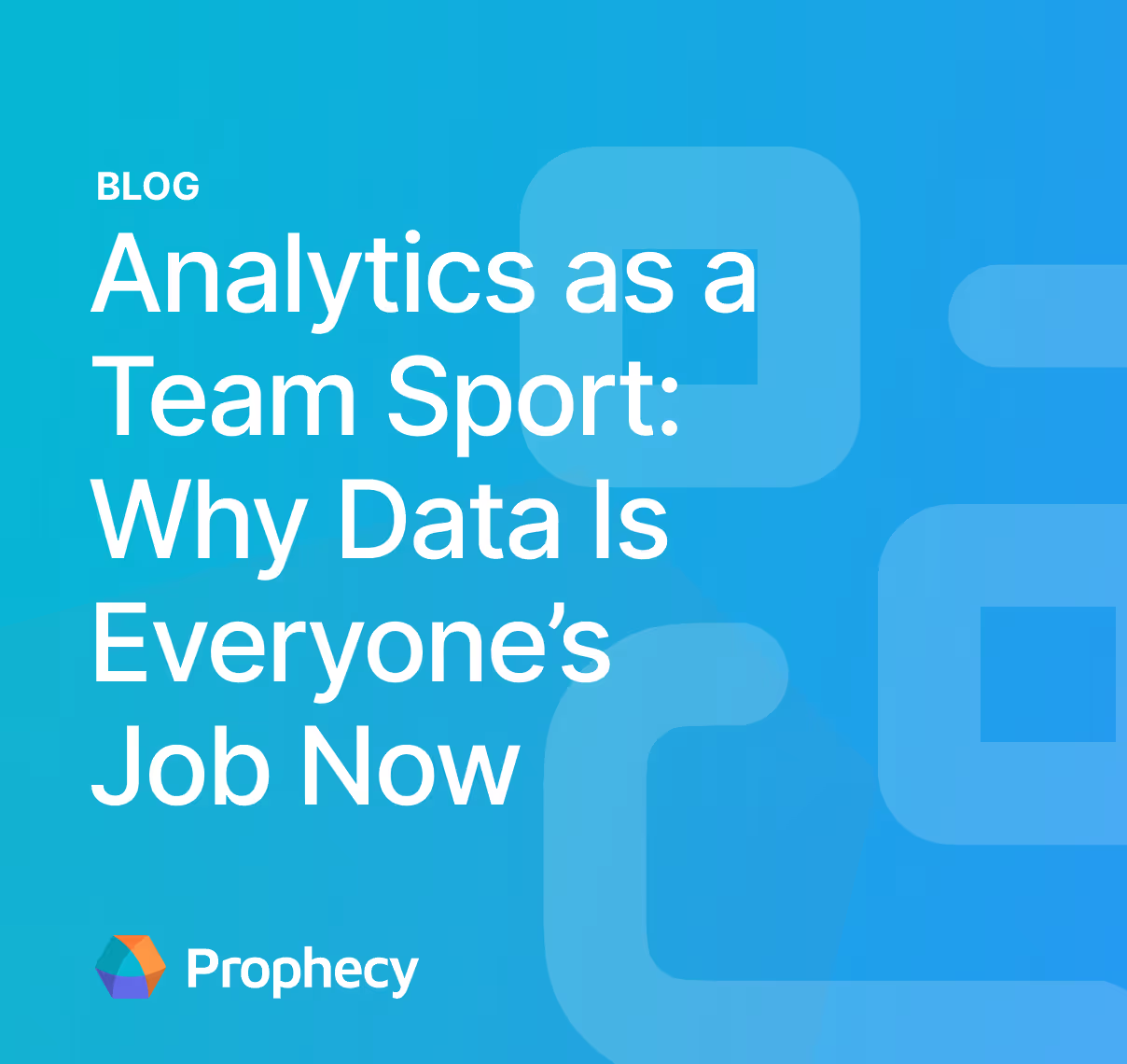A Guide to DataFrames for Modern Data Transformation
Learn how DataFrames power modern data workflows, from cleaning raw data to building machine learning models, across Python, R, and Apache Spark.
If you’ve worked with structured data, chances are you’ve come across a DataFrame. DataFrames are the backbone of modern data workflows because they power everything from your team’s daily dashboards to your machine learning models.
Understanding DataFrames is an essential skill for modern data practitioners, whether you’re building machine learning models or managing enterprise data workflows.
What are DataFrames?
A DataFrame is a two-dimensional, labeled data structure that’s often compared to a spreadsheet but with far more power and flexibility. It organizes data into rows and columns, where each column has a defined data type (such as integer, string, or datetime), and each row represents a single record or observation. This tabular format makes it intuitive for both humans and machines to manipulate structured datasets at scale.
Why does this matter? Because raw data is almost never perfect. It’s often messy, inconsistent, and stored in various formats and places. Before you can analyze that data or use it for machine learning, you need a structure that can handle common challenges like:
- Missing information
- Different types of data (like numbers, text, or dates)
- Easy calculations on entire columns
- Fast filtering, sorting, and organizing of data
- Working with SQL-like queries and transformations
This is where DataFrames come in. They provide a structured framework that helps us clean, process, and organize raw data effectively. DataFrames simplify tasks that would otherwise be tedious or complicated, making them essential tools for both quick exploratory analysis and building robust data systems.
The anatomy of a DataFrame
To truly understand DataFrames, it helps to look under the hood at how they’re constructed and what they offer beyond just “rows and columns.” Here are the major components of a DataFrame:
- Rows: Each row represents a single observation, event, or record, like a customer purchase or a web session.
- Columns: Each column contains a specific attribute of the data, such as "Product Name", "Amount", or "Timestamp", and has a fixed data type.
- Index: Many DataFrame libraries support row indexing to enable fast lookups or time series manipulation. This is particularly useful when dealing with logs or time-ordered data.
- Schema: In systems like Spark, DataFrames include a schema that defines data types explicitly. This schema enables performance optimizations, validation, and strong typing, which are critical for large-scale data processing.
- Metadata: Some frameworks allow for column-level metadata (e.g., units or descriptions), which can be especially useful in analytics or reporting use cases.
Let’s visualize it:
In a well-structured DataFrame:
- "Order ID" is a string
- "Quantity" is an integer
- "Price" is a float or decimal
- "Order Date" is a datetime object
Comparing DataFrames in different coding languages
While the DataFrame concept is universal, each language has its own implementation quirks, optimizations, and ecosystem strengths. Here’s how DataFrames function in the three most widely used environments:
Python
In Python, the Pandas library is the go-to tool for working with DataFrames. It provides a flexible and fast structure for data manipulation and analysis. One of its main strengths is its simple syntax and ease of use. Python's DataFrame implementation excels in handling both small datasets and complex workflows with ease. With just a few lines of code, you can load data from various file formats (CSV, Excel, or SQL databases) and perform complex operations.
Pandas is especially popular in data science and machine learning workflows because of its integration with other libraries, like NumPy and scikit-learn. If you’re familiar with Python’s dynamic nature, working with Pandas will feel natural and flexible, enabling you to experiment and prototype quickly without too much repeated code.
R
In R, the data.frame object serves a similar purpose, providing a table-like structure for data storage and manipulation. What makes R’s DataFrames particularly powerful is how they are tailored for statistical analysis and data visualization. R’s DataFrame is tightly integrated with libraries like dplyr and tidyr, which offer a rich set of functions for transforming and analyzing data. For instance, dplyr allows for intuitive data manipulation with commands like filter(), mutate(), and summarize(), making R’s DataFrames particularly appealing for those working in statistics and data science.
However, R’s DataFrames can sometimes struggle when working with larger datasets compared to Python’s Pandas or Apache Spark. For massive data workloads, R may require additional resources or may not perform as well as some of its competitors. But within the realm of statistical analysis and smaller datasets, R shines with its rich ecosystem of data analysis tools.
Apache Spark
When it comes to big data, Apache Spark takes the DataFrame concept to the next level. Spark’s DataFrame API enables processing of huge datasets across a distributed cluster of machines, which allows it to scale horizontally. Spark DataFrames can handle data that is too large to fit into memory on a single machine, breaking it down into chunks and processing it across multiple nodes. This makes it ideal for big data analytics and distributed data processing, allowing you to work on billions of rows with ease.
What sets Apache Spark apart is its ability to optimize queries and operations on distributed data. It can rewrite your transformations into an efficient execution plan, saving both compute time and cost. Spark’s DataFrame API is often used in combination with other big data tools like Databricks to process large datasets at scale while ensuring data consistency and fault tolerance.
Why DataFrames matter in modern data workflows
In the past, data transformation meant manually writing scripts to clean and reshape raw data before loading it into downstream systems. These processes were brittle, opaque, and often undocumented.
Enter the DataFrame. By offering a unified, schema-aware structure for working with data, DataFrames:
1. Create a shared language between teams
Data engineers, data scientists, and analysts often operate in silos, each with their own specialized language and tools. However, DataFrames provide a common abstraction that enables collaboration across technical boundaries. Whether you're writing code in PySpark, working in a Jupyter notebook with Pandas, or using a visual interface to design data pipelines, you're conceptually working on the same thing—a DataFrame. This shared language reduces friction in handoffs between teams, allowing for more fluid communication and understanding.
2. Support reproducibility and lineage
In modern data workflows, especially in industries with strict regulatory requirements, reproducibility and lineage are essential. DataFrames provide an easily trackable and reproducible format for data transformation. Since DataFrame operations are codified, meaning they’re defined in code, each operation can be captured, versioned, and tracked. This gives you a clear record of all data transformations and workflows.
3. Enable optimization
Unlike traditional scripts, which may require manual optimization or complex tuning, DataFrame operations are inherently optimized by modern data platforms and query planners. Tools like Apache Spark can take a series of DataFrame transformations and automatically rewrite them into an optimized execution plan. By optimizing operations at the query level, DataFrames allow for better resource utilization and faster execution, which can significantly reduce the time and cost associated with large-scale data processing.
4. Enhance business agility
DataFrames can improve business agility by automating repetitive tasks. Traditionally, cleaning and transforming raw data would take analysts or data engineers hours or even days. With DataFrames, these tasks can be automated, allowing analysts to focus on strategic analysis instead of data wrangling. This dramatically speeds up decision-making, as business users can analyze up-to-date data in near real-time.
5. Scale with your business
One of the most significant advantages of DataFrames is their ability to scale seamlessly as your data and business needs grow. You can start with a simple Pandas DataFrame in a local Jupyter notebook, working with smaller datasets that fit in memory. As your needs scale, you can easily transition to Apache Spark, which allows for distributed processing across clusters of machines. Because the core DataFrame model remains the same across both tools, you don’t need to retrain your entire team or rewrite your code when scaling.
6. Prepare data for machine learning
In machine learning, feature engineering is often the most time-consuming part of building models. DataFrames play a crucial role in this process by transforming raw data into model-ready features. Whether it's simple tasks like normalization or more complex ones like feature extraction and aggregation, DataFrames provide a structured, repeatable way to handle and manipulate data throughout the pipeline. This makes it easier to prepare data for models, ensuring consistency and reproducibility across experiments.
Democratize DataFrame access and operations with Prophecy
While DataFrames are powerful, they’ve historically been accessible only to people who know how to code. That’s changing. At Prophecy, we believe everyone should be able to work with data at the DataFrame level, without writing Python or Spark code from scratch.
That’s why our platform offers:
- Drag-and-drop visual interfaces that generate native Spark code behind the scenes
- Natural language transformations, where you describe what you want, and the system translates it into executable logic
- Real-time previews and validation, so you see what your data looks like before committing changes
- Embedded governance, so even non-technical users stay compliant with data standards
Learn more about Prophecy and how it handles DataFrames in our webinar, Your tools suck! Re-imagining Spark Development.
Ready to give Prophecy a try?
You can create a free account and get full access to all features for 21 days. No credit card needed. Want more of a guided experience? Request a demo and we’ll walk you through how Prophecy can empower your entire data team with low-code ETL today.
Ready to see Prophecy in action?
Request a demo and we’ll walk you through how Prophecy’s AI-powered visual data pipelines and high-quality open source code empowers everyone to speed data transformation
Get started with the Low-code Data Transformation Platform
Meet with us at Gartner Data & Analytics Summit in Orlando March 11-13th. Schedule a live 1:1 demo at booth #600 with our team of low-code experts. Request a demo here.
Related content
A generative AI platform for private enterprise data
Introducing Prophecy Generative AI Platform and Data Copilot
Ready to start a free trial?
Lastest posts

The AI Data Prep & Analysis Opportunity

The Future of Data Is Agentic: Key Insights from Our CDO Magazine Webinar


